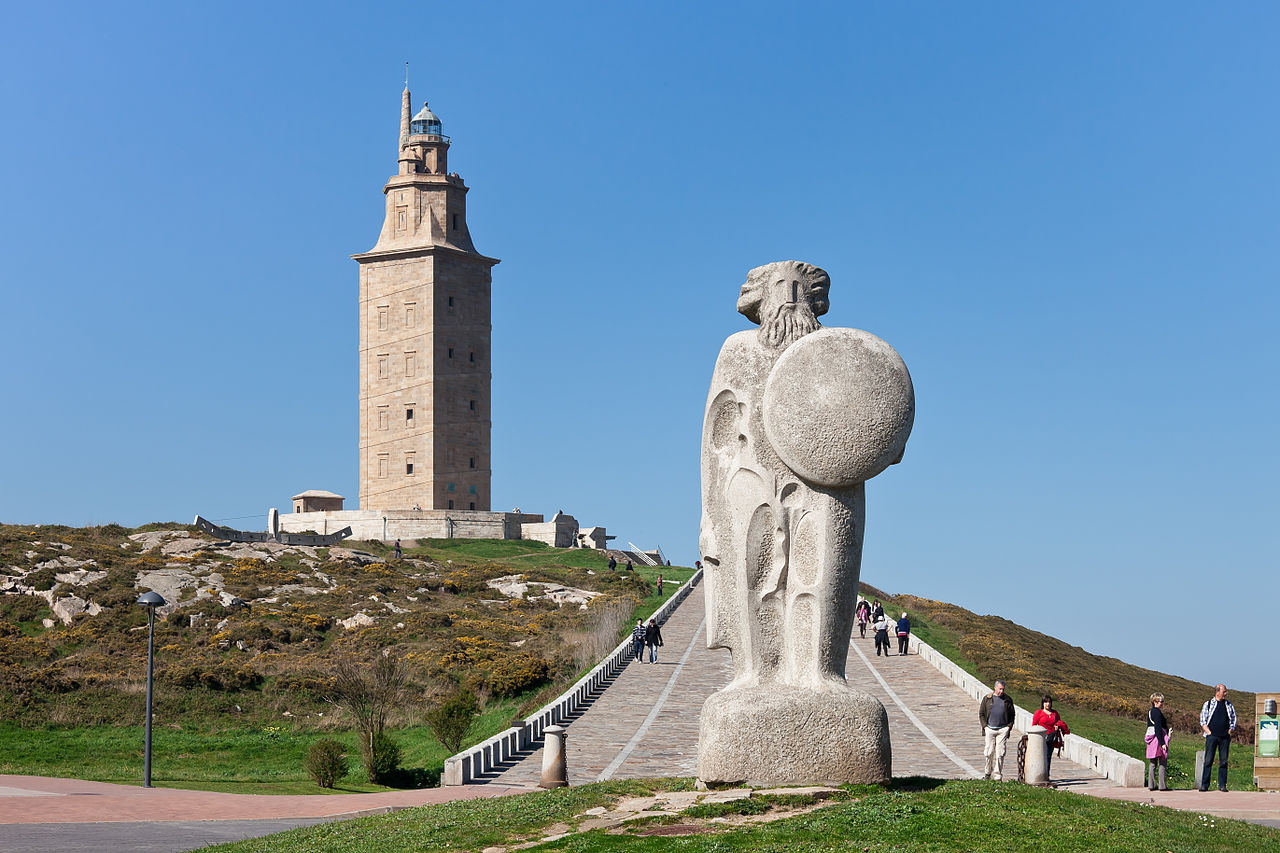
The Tower of Hercules is an ancient Roman lighthouse on a peninsula about 2.4 kilometres (1.5 mi) from the centre of A Coruña, Galicia, in northwestern Spain. It is easily the most well preserved lighthouse remaining from the classical Roman age. According to myth, it also marks the resting place of one of Hercules' greatest conquests. As part of one of the mythic Twelve Labours of Hercules, the super strong son of Zeus is said to have killed the giant Gerylon with an arrow dipped in Hydra's blood. Then in a gesture that is more Celtic than Roman, the legend says that Hercules buried the giant with his weapons and ordered a city built atop the burial site. While the area where the tower is built was rather barren when it was originally built, the surrounding city of Corunna has sprung up around it across the millennia. While there are not actually titanic bones beneath the tower, the legend is so pervasive that an image of the tower atop a skull and bones is the centrepiece of the city's coat of arms.

Until the 20th century, the tower itself was known as the "Farum Brigantium" or “Brigantia Lighthouse”. The Latin word ‘farum’ is derived from the Greek pharos for the Lighthouse of Alexandria. The structure is 55 metres (180 ft.) tall and overlooks the North Atlantic coast of Spain. Almost 1900 years old and rehabilitated in 1791, it is the only Roman lighthouse still in use today.
The Tower of Hercules is a National Monument of Spain, and since June 27, 2009, has been a UNESCO World Heritage Site. It is the second tallest lighthouse in Spain, after the Faro de Chipiona.
The tower is known to have existed by the 2nd century, is thought to be modelled after the Lighthouse of Alexandria. At its base is preserved the cornerstone with the inscription MARTI AUG.SACR C.SEVIVS LUPUS ARCHTECTUS AEMINIENSIS LVSITANVS.EX.VO, permitting the original lighthouse tower to be ascribed to the architect Gaius Sevius Lupus, from Aeminium (present-day Coimbra, Portugal) in the former province of Lusitania, as an offering dedicated to Mars. The tower has been in constant use since then. The earliest known reference to the lighthouse at Brigantium is by Paulus Orosius in Historiae adversum Paganos written around 415-417.
 09.52.31.png)
 09.52.04.png)
 09.52.21.png)
 09.53.04.png)
In 1788, the original 34 metres (112 ft), 3-storey tower was given a neoclassical restoration, including a new fourth storey.(an additional 21 metres) The restoration was undertaken by naval engineer Eustaquio Giannini during the reign of Charles III of Spain, and was finished in 1791. Within, the much-repaired Roman and medieval masonry can still be appreciated. 09.53.14.png)
The Romans who conquered this region of Spain believed it to be, in a figurative sense, the end of the earth, as described in "Finisterra". This region is notorious for shipwrecks, earning the name Costa da Morte, "The Coast of Death".
The positioning of the lighthouse is not very clear since it strongly favours an approach from the northwest. It does not provide a true guide to safe harbour to vessels approaching either up the West coast of the Iberian peninsula, nor along the Rias of the north coast, as one might expect. This would imply that the lighthouse was built to satisfy the needs of regular traffic coming in from the Atlantic, perhaps taking a westerly route from the Côte d’Opale area to avoid the Bay of Biscay or direct from Ireland or even South West England. Whatever its purpose was, the only thing that really matters now is that we have this wonderful example of Roman architecture to enjoy on what is one of Spain’s most stunning coastlines.